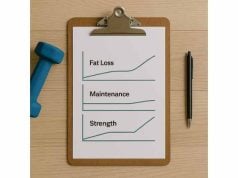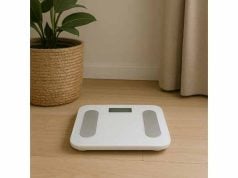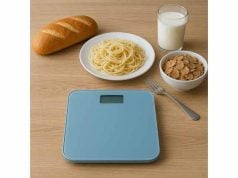
You tightened your meals and kept steps steady, yet the scale has stopped moving. Before you slash calories again, consider an often-missed factor: your prescriptions. Several common medications shift appetite, water, and energy use in ways that flatten progress even when your plan is solid. This guide explains how drugs create weight plateaus, which classes are most often involved, and how to raise the right questions with your clinician. If you are unsure whether you are in a true stall or normal fluctuation, run a quick check with our concise plateau and maintenance troubleshooting guide before you adjust anything.
Table of Contents
- How medications cause weight plateaus
- Common medication culprits
- Water, appetite, or metabolism?
- What to ask your clinician
- Nutrition and activity adjustments
- When to switch or add support
- Verify a true plateau first
- FAQ
How medications cause weight plateaus
A weight plateau is often an energy balance problem in disguise. The wrinkle with medications is that they can nudge both sides of the balance—calories in and calories out—without you noticing. Some raise appetite or change taste reward so you graze more. Others make you feel flat, so movement falls and workouts lose intensity. Several cause fluid shifts that mask fat loss for weeks. The result looks like “my plan stopped working” when the inputs actually changed.
Mechanisms that show up most in everyday life:
- Appetite and cravings. Certain antidepressants and antipsychotics increase hunger signals or make energy-dense foods unusually appealing. You may not feel “starving,” but the second snack becomes routine.
- Energy expenditure. Sedating antihistamines, some beta blockers, and pain medicines can reduce spontaneous movement and training drive. Even a small drop in daily activity compounds across the week.
- Fluid and sodium handling. Corticosteroids, some hormones, and medications that affect the kidneys can increase water retention. The scale holds steady or jumps while body fat quietly trends down, tempting you to overcorrect.
- Glycemic control and insulin. Drugs that raise insulin levels or sensitivity in certain ways can change how your body stores fuel. With insulin therapy, the priority is safe glucose control, even if weight goes up. The strategy then becomes structured weight management around the medicine, not the other way around.
Here is the trap: you often respond to a stall by cutting calories harder. If the driver is medication-induced hunger or fatigue, that extra restriction makes adherence fragile and sleep worse—feeding the same loop. The better approach is to map the mechanism first, then choose the smallest effective fix.
Start with simple signals:
- Did your plateau start within one to three months of a new prescription or dose change?
- Do certain times of day feel different now (e.g., evening hunger since starting a sedating med)?
- Has your step count, training load, or sleep shifted since the change?
Answering those questions will guide whether your next step is a conversation about alternatives, a nutrition tweak, or a brief maintenance phase. If you need a refresher on safe fat loss fundamentals before you adjust, look over our concise primer on healthy weight-loss basics to keep changes measured and sustainable.
Key takeaway: Medications can stall progress by changing appetite, activity, or fluid balance. Once you identify the lever that moved, you can work with your clinician on a plan that protects both health and momentum.
Common medication culprits
Not every drug affects weight, and responses vary. Still, a handful of classes come up repeatedly in weight plateau stories. Use this section as a practical map for discussion—not a diagnosis and not a reason to stop or change a prescription on your own.
Mental health medications
- Atypical antipsychotics (for example, olanzapine, clozapine, quetiapine): commonly associated with increased appetite and fluid shifts. Some people gain quickly after initiation.
- Antidepressants:
- Mirtazapine and many tricyclics (e.g., amitriptyline) tend to increase appetite and sleepiness.
- SSRIs/SNRIs vary; some people maintain or lose early, then drift up over months.
- Bupropion is often more weight-neutral or modestly weight-negative, which is why clinicians sometimes choose it when appropriate.
- Mood stabilizers: Lithium and valproate can raise appetite or cause water retention in some individuals.
Cardiometabolic medications
- Insulin (essential for many with diabetes): weight gain can occur as glucose control improves because fewer calories are lost in urine and hypoglycemia prompts extra intake; management focuses on nutrition structure, activity, and safe titration.
- Sulfonylureas (e.g., glipizide): can increase risk of low glucose and subsequent compensatory eating.
- Thiazolidinediones (e.g., pioglitazone): often increase water and sometimes fat mass while improving insulin sensitivity.
- Beta blockers (especially older agents like propranolol or atenolol): may reduce spontaneous activity and training capacity in some users.
- Diuretics and certain blood pressure agents: weight can bounce with sodium and water changes; not true fat gain but confusing to track.
Hormonal therapies
- Glucocorticoids (e.g., prednisone): appetite, water retention, and body fat distribution can shift rapidly; timing and dose matter.
- Contraceptives and hormone therapies: responses vary widely; some users report more appetite or fluid retention while others do not.
Neurologic and pain medications
- Gabapentin and pregabalin: can increase appetite and sedation.
- Migraine preventives (e.g., some tricyclics): may carry similar appetite/sedation effects as above.
Antihistamines and sleep aids
- Sedating H1 antihistamines (e.g., diphenhydramine, doxylamine): can raise appetite and reduce energy expenditure through increased sleepiness and lower NEAT (non-exercise activity thermogenesis).
What about drugs that help?
Some medications are weight-neutral or often support fat loss as a side effect (for example, metformin, SGLT2 inhibitors in diabetes, topiramate for certain migraines, or GLP-1 receptor agonists where indicated). These are specific tools for specific conditions; your clinician weighs benefits and risks for your case.
If your pattern matches a likely culprit, confirm you are in a true stall before changes. A quick two-to-four-week review like our practical plateau check can save you from chasing normal noise.
Bottom line: Focus on classes and patterns, not drug names alone. Your response and your health priorities decide the best path forward.
Water, appetite, or metabolism?
Before you change a medication or overhaul your diet, identify which mechanism is most active. Each one requires a different fix.
1) Water retention (scale up, clothes similar).
Clues: weight jumps within days, rings feel tight, morning weight remains puffy for a week, but waist or photos barely change. Corticosteroids, some hormones, and certain cardiometabolic drugs can shift sodium and water.
What helps: track 7-day averages, keep sodium consistent day to day, and judge progress by waist and photos. Do not slash calories for water. If pressure or discomfort is high, speak with your clinician.
2) Appetite and reward (calorie creep).
Clues: you hit protein but nibble more often; late-night snacking appears; portions drift up; restaurant meals feel harder to manage. This is common with mirtazapine, tricyclics, some antipsychotics, and sedating antihistamines.
What helps: deliberate protein and fiber distribution (25–40 g protein and 8–12 g fiber at lunch and dinner), pre-logged evening snack templates, and meal repetition on workdays. If evening eating is the main issue, our focused playbook on late-night snacking fixes pairs well with your plan.
3) Lower energy expenditure (NEAT and training down).
Clues: steps drop, you pass on short walks, workouts feel heavier at the same loads, and you sit more. Older beta blockers, sedating agents, and pain medicines can nudge activity lower.
What helps: intentional step anchors (e.g., 10-minute walks after meals), standing tasks during calls, and a structured, shorter lifting plan that protects strength. Support sleep and hydration; fatigue magnifies the dip.
4) Glycemic strategy changes (diabetes care).
Clues: as glucose control improves, hunger behaves differently; you may eat to avoid lows; weight rises even with careful meals.
What helps: time pre-workout carbs, carry measured snacks to avoid overcorrecting lows, and coordinate dose and timing with your clinician. The goal is safe glucose first, steady weight second.
To avoid mistaking water for fat, review the physiology basics in our short explainer on water, glycogen and sodium. Many “plateaus” fade once sodium, sleep, and tracking are consistent across seven to ten days.
Key idea: Name the mechanism—water, appetite, energy, or glycemic strategy—then apply the smallest fix that addresses that mechanism.
What to ask your clinician
You and your clinician share the same goal: control symptoms and protect quality of life. Arrive with specific observations and questions. That makes a solution more likely at the first visit.
Bring concise data
- A 14-day weight trend (morning averages for Week 1 vs. Week 2).
- A 3-day food snapshot (normal days, not “perfect” days), noting evening snacks.
- Step counts and training notes for two weeks.
- The timeline: when the medication started or the dose changed relative to the stall.
Ask targeted questions
- Is weight gain or plateau common with this medication at my dose? If so, is it mainly water or appetite driven?
- Are there weight-neutral alternatives that still treat my condition well?
- If we stay on this medication, what lifestyle strategies have helped your other patients?
- Is timing (morning vs. evening), split dosing, or a slow titration sensible for me?
- If we change medications, what should I monitor in the first month? When should I contact you?
Discuss realistic trade-offs
Sometimes the medicine that manages your condition best carries a higher weight effect. In those cases, agree on guardrails: how you will track, what amount of drift is acceptable, and when you will revisit the plan. A simple checklist like our plateau checklist can serve as a shared reference.
Plan the next step
If you and your clinician decide to hold the medication steady, choose one or two behavior changes to test for 14 days. If you decide to taper or switch, get a written schedule, understand side-effects to watch for, and know who to call if symptoms spike.
Bottom line: You will get better answers with clear observations, specific questions, and a modest, time-boxed plan—then a follow-up.
Nutrition and activity adjustments
If your clinician recommends staying on the same medication for now, a few precise levers can offset the plateau without turning maintenance into a second job.
Build satiety on purpose
- Protein and fiber distribution: target 25–40 g protein and 8–12 g fiber at lunch and dinner. This steadies late-day appetite even when medicines nudge hunger up.
- Pre-planned night snack: allocate 150–250 kcal for a high-protein option (Greek yogurt and berries, cottage cheese and tomato, casein shake). Pre-log it so impulse eating has less room.
Tighten the calorie envelope gently
- Trim 100–150 kcal from daytime add-ons you do not notice (oils, dressings, handfuls).
- Keep one default breakfast and one default lunch on workdays to reduce drift.
- If needed, adjust macros—raise fats by 10–15 g and reduce carbs equivalently if richer meals curb cravings better for you. For macro tuning steps, see our guide to adjusting calories and macros safely.
Protect movement despite lower drive
- Anchor three 10-minute walks (after meals). The structure matters more than total minutes at first.
- Use “minimum effective dose” strength sessions (e.g., two full-body workouts per week with five key lifts).
- Track weekly step averages; add 1,000–2,000 steps if weight drifts up for two weeks.
Sleep and stress
- Many appetite changes ease when sleep hits 7–8 hours. If your medicine affects sleep, ask about timing or supportive strategies. For appetite and recovery repairs, our focused playbook on sleep and stalled fat loss can help you set a steady evening routine.
Evaluate every 14 days
Hold changes steady and judge by two-week averages. If weight remains flat but you feel better and measurements improve, you may already be winning; not every stall needs more restriction.
Bottom line: A small set of predictable meals, modest calorie trims, purposeful walks, and solid sleep often offset medication effects without aggressive dieting.
When to switch or add support
There is a point where restraint alone is not the right tool. If a medication repeatedly triggers overeating or heavy fatigue, even well-designed plans can wobble. That is when you and your clinician consider a phase change or medical adjustments.
Signs to revisit the prescription
- Strong, persistent appetite increases that do not respond to protein, fiber, and routine.
- Rapid water retention with uncomfortable swelling or blood pressure changes.
- Training performance and daily activity fall for two or more weeks despite recovery fixes.
- Mood or pain control is good, but weight is climbing steadily and affecting health markers.
Options to discuss
- Dose timing or formulation: moving a sedating dose to evening, or switching to an extended-release form, sometimes reduces appetite impact.
- Weight-neutral alternatives: ask about within-class options that are friendlier for weight while still effective for your condition.
- Adjunctive therapies: in specific cases, clinicians consider additions (for example, metformin in diabetes care, or other evidence-based options) to blunt appetite or improve glycemia.
- Diet breaks and maintenance phases: two weeks at estimated maintenance can restore training drive and sleep, then you can reassess. If your plan needs more calories to be livable on this medication, raise cautiously.
If your stall persists even with best practices, read our practical guide on when to raise calories. Sometimes a small increase stabilizes appetite and performance so you can resume steady progress later.
Safety first
Never stop or taper a prescription medication without instructions. Several drugs require gradual changes to avoid withdrawal or symptom rebound. And for conditions like bipolar disorder, psychosis, severe depression, or insulin-treated diabetes, disease control outranks short-term weight targets every time.
Bottom line: When appetite or energy effects are large and persistent, coordinate with your clinician. A small medical change, or a planned maintenance phase, often works better than more restriction.
Verify a true plateau first
Before you attribute every stall to medication, confirm that you are not chasing normal noise. Many people see a flat week and panic, especially after a dose change. The fix is a short audit:
Run a two-week check
- Daily morning weigh-ins, then compare Week 1 and Week 2 averages.
- Waist or navel measurement once per week.
- Food visibility: log dinner and any food after dinner for seven nights.
- Movement snapshot: record steps and workouts for the same period.
Interpretation
- If the weight average is stable within ±0.5% and measurements do not trend up, you may already be maintaining while your body adjusts to a new fluid balance.
- If evenings routinely add 200–400 kcal, target those meals first—not breakfast.
- If steps dropped 1,500–2,000 per day since the prescription change, build them back deliberately.
Decide your lever
- Water pattern: hold steady, keep sodium consistent, reassess next week.
- Appetite pattern: strengthen protein and fiber, pre-log a night snack, or move 150–250 kcal from daytime to dinner.
- Energy pattern: add short walks and simple strength sessions; protect sleep.
The goal is to avoid over-fitting your plan to a noisy week. When you confirm a true plateau, the conversation with your clinician becomes clearer and faster.
Key idea: Verify first, then adjust the lever that actually moved.
FAQ
Which medications most often lead to weight plateaus?
Common culprits include atypical antipsychotics, mirtazapine and some tricyclic antidepressants, lithium or valproate, insulin and sulfonylureas, thiazolidinediones, sedating antihistamines, and older beta blockers. Responses vary by person and dose. Never change a prescription without medical advice.
How can I tell if it is water weight or fat gain?
Water weight tends to rise quickly, with tight rings and little change in waist or photos. Average morning weights over seven days and keep sodium steady. If measurements are stable but weight is up, it is likely water. Judge progress by two-week trends, not single days.
Do I need to lower calories when a medicine raises appetite?
Not always. First, improve protein and fiber at lunch and dinner, pre-log a high-protein evening snack, and reduce untracked extras like oils or dressings. If hunger remains high after two weeks, trim 100–150 kcal or raise steps modestly and reassess.
Are there weight-neutral alternatives I can ask about?
Often yes, but it depends on your diagnosis and history. Within some classes, alternatives are more weight-neutral (for example, bupropion among antidepressants in certain cases). Ask your clinician which options fit your condition and what trade-offs to expect.
What if insulin therapy is causing weight gain?
Safety comes first. Work with your clinician on dose timing, hypoglycemia prevention, and structured meals. Align carbs around activity, keep protein steady, and track weekly averages. The target is stable glucose and livable weight management, not aggressive restriction.
Can sleep or steps offset medication-related stalls?
Yes. Consistent 7–8 hours of sleep, three 10-minute walks per day, and two simple strength sessions each week often restore appetite control and energy. These changes are small but compound over time and are safer than drastic calorie cuts.
References
- 9. Pharmacologic Approaches to Glycemic Treatment: Standards of Care in Diabetes-2025 2025 (Guideline)
- Medication-Induced Weight Change Across Common Antidepressant Treatments: A Target Trial Emulation Study 2024 (Observational Cohort)
- Antipsychotic-Induced Weight Gain: Dose-Response Meta-Analysis of Randomized Controlled Trials 2022 (Meta-analysis of RCTs)
- Obesity Management in Adults A Review 2023 (Review)
- Side effects of prednisolone tablets and liquid 2022 (NHS Guidance)
Disclaimer
This article provides general education about how medications can influence weight and appetite. It is not medical advice and should not replace care from your clinician or pharmacist. Never start, stop, or change a prescription without professional guidance. If you notice rapid weight change, swelling, mood shifts, or low blood sugar, seek medical help promptly.
Share and follow
If this guide clarified something for you, consider sharing it with a friend who is navigating a stall. For practical updates and simple checklists, follow us on the social network you use most—Facebook, X (formerly Twitter), or another platform you prefer.










